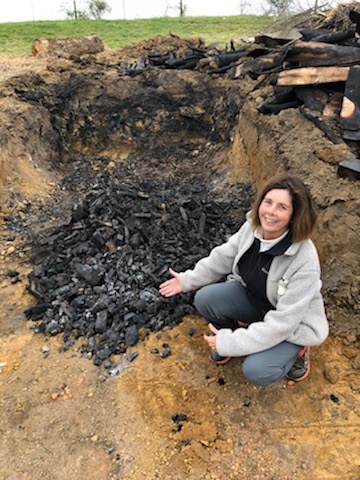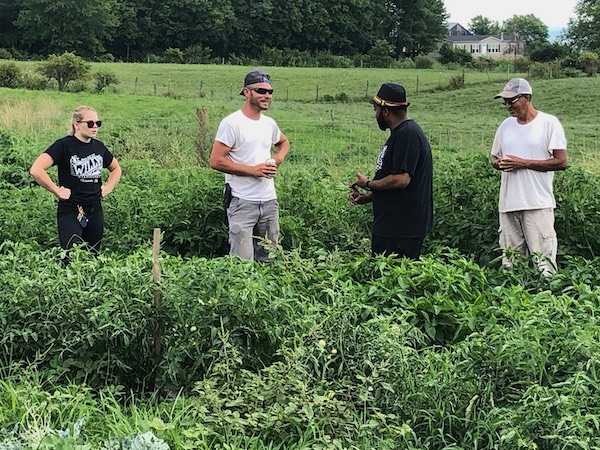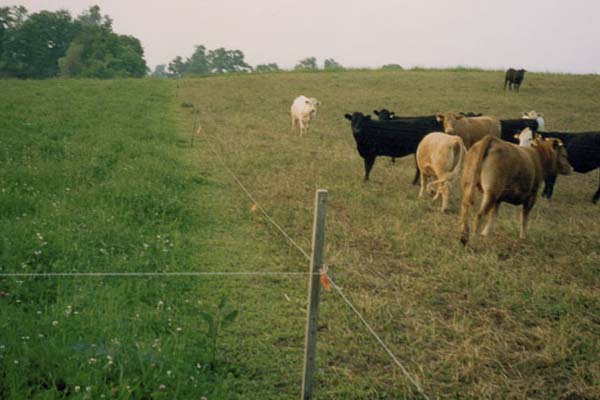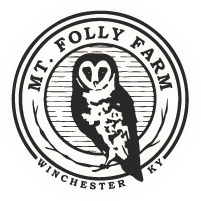Frequently Asked Questions:
How do you practice regenerative agriculture?
At Mt. Folly, we rotationally graze our cattle, mimicking buffalo, and have been doing this for decades. Because of the beeves manure and sharp hooves, this practice builds organic matter in pasture soils. We also graze the cattle on the cover crops planted on crop ground.
According to Gabe Brown, Allan Savory, and our own data, animals are crucial for building soil carbon. Mimicking bison and other ungulates, cattle become part of the food web. Their herding instinct, coupled with their manure and group trampling tendency, improve the soil, allowing it to return to its original place in the ecologic system — a carbon sink.
Next, after the cash crop is harvested, we plant cover crops on all crop land, achieving the goal of having the soil covered year-round. In addition to their complex root system, with mycorrhizal fungi and other soil microbes feeding the soil biology, the cash crop plants followed by cover crop plants all photosynthesize, turning atmospheric carbon into food and nourishing the soil’s biology. This system returns oxygen to the atmosphere.
Thirdly, we reduce or eliminate tillage wherever we can. As organic farmers, this is the most challenging task for climate and stable soil carbon.
Finally, we plant trees on the farm’s steep hillsides, making up about a quarter of the farm’s acreage. Our mixed species timber stands are managed with input from a professional forester, so that trees are kept growing, sequestering carbon as they grow.

Regenerative Agriculture, Bio Char, Mt. Folly Farm, FAQ, Frequently Asked Questions, CBD, Whiskey, Beef, Climate-Smart Farming
What are the benefits of organic farming?
For people who eat, the benefits are obvious: food raised without pesticides and herbicides is safer and more nutritious.
Organic food is safer because choosing organics lessens exposure to harmful chemicals, including those which mimic estrogenic hormones, those which upset the human microbiome and thus the human brain, and those which are known carcinogens.
Organic food is more nutritious because plants raised organically compete in a complex environment for their nutrition, and in turn are more nutritious themselves when eaten, reversing a decades-long decline in fruit and vegetable vitamins and minerals.
Organics are better for the planet as well. Even with mechanical tillage, organic use of compost, manure and cover crops stabilizes soil carbon at greater depths than chemical no-till. Also, importantly, the soil is alive, with billions of microbes respirating, competing for nutrients, cooperating to feed plant and tree roots, maintaining a complex living system. This is in contrast to a human-induced dead system, with plant and animal nutrition a byproduct of fossil fuel production through the Haber Bosch process and chemical manufacturing.
At Mt. Folly, we are conscious of keeping a closed system as we farm. Rather than mirroring industrial agriculture, and trucking in “organic” inputs, we are intent on raising our own fertility with cattle, cover crops, wood chips and manure. While we do “truck in” liquid kelp and organic molasses, we keep purchased organic fertilizer and soil amendments to a minimum.

Regenerative Agriculture, Bio Char, Mt. Folly Farm, FAQ, Frequently Asked Questions, CBD, Whiskey, Beef, Climate-Smart Farming,
What is the most effective carbon sequestration method?
This is a complex question centering on the concept of drawdown.
Presently, the oceans have sequestered many gigatons of human-produced carbon caused by burning fossil fuels. Some of this carbon reacts with water to form carbonic acid, turning the ocean’s PH from slightly alkaline to neutral or slightly acidic, killing corals and damaging shell-making ability of ocean-dwelling animals.
The earth’s forests, including boreal forests in northern latitudes and rainforests near the equator, also have sequestered carbon for thousands of years. The destruction of these forests squanders this sink and releases the stored carbon back into the atmosphere.
For drawdown to be effective, both these sinks must be restored.
Additionally, pasture and cropland, managed parts of the food system which feeds 8 billion people, can sequester carbon. The clearest way to think about this is to recognize that organic matter is 58% carbon. Cover crops, management intensive grazing, reduced tillage, and working with soil biology increase organic matter over time in a measurable way.

Regenerative Agriculture, Rotational Grazing, Mt. Folly Farm, FAQ, Frequently Asked Questions, CBD, Whiskey, Beef, Climate-Smart Farming,

